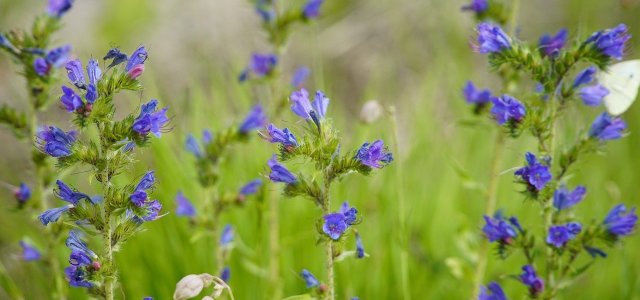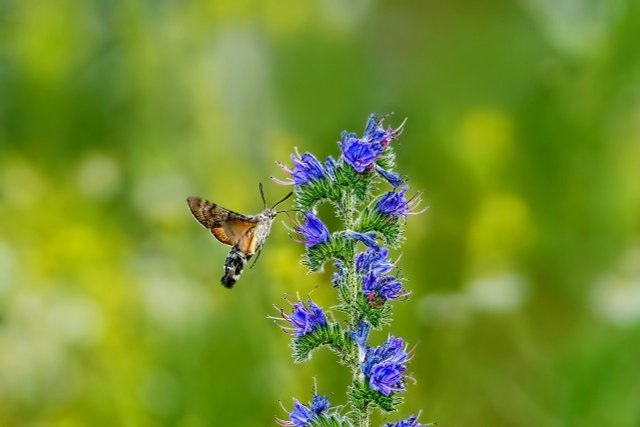
The low-maintenance viper’s bugloss is a great choice for an insect-friendly garden. Read here how to plant and care for this plant that is popular with bees and butterflies.
Viper’s bugloss is an herbaceous plant and grows from 25 inches to a foot tall. Viper’s bugloss is hardy and widespread throughout Europe. The viper’s bugloss shows its flowers from May to October – first they are pink and purple, then blue. This flower-rich plant is great if you want to create an insect-friendly garden: Bees and butterflies, such as swallowtails, thistle butterflies and cabbage white butterflies, feed on its nectar.
Contents
Planting viper’s bugloss: it’s that easy
The viper’s bugloss is a low-maintenance plant that you can also plant in your garden. If you find a suitable location for the plant, it will reward you with its pretty blue flowers. Viper’s buglosses prefer:
- a dry, full sun location
- with well-drained, sandy and loose soil
- with nutrient-poor, not too acidic soil.
Once you have found a good spot, the next step is to plant the viper’s bugloss. You can buy the plants in specialized stores, where you can also get advice on the individual varieties.
- Dig sufficiently large planting holes for the pot balls. Keep in mind that the viper’s bugloss develops a taproot that can penetrate up to two meters into the soil.
- You should maintain a distance of about 40 to 50 centimeters between the planting holes. This gives about six plants per square meter.
- If your soil is not permeable enough or relatively heavy, you can mix it with sand.
- Place the plants in the holes and fill them with soil. Press them down well.
- Water the viper heads carefully.
Tip: You can also get seeds and sow the viper’s bugloss yourself.
Care for viper’s bugloss: 3 tips

To the delight of many amateur gardeners, the viper’s bugloss is very easy to care for and undemanding. If you follow the tips below, you won’t go wrong:
- Viper’s bugloss is used to drought, so you only need to water it well in the early days after planting. Even after that, you can give it water from time to time, but it is not absolutely necessary. Waterlogging and too much water are not tolerated by the viper’s bugloss.
- Viper’s bugloss needs few nutrients. Therefore, you do not need to fertilize it outdoors. If you cultivate it in a container, you can give it small amounts of fertilizer every ten weeks.
- You do not need to cut viper’s head.
You do not need to prune viper’s bugloss.
Use viper’s bugloss: As a medicinal plant and in the kitchen
Viper’s bugloss is a relative of borage and comfrey and has similar healing properties. It is said to help with bruises, fever, sprains, wounds, redness and coughs, among other things – but it is hardly used in herbal medicine.
In the kitchen, however, you can use the flowers, leaves and seeds of the plant. It is important that you use them in moderation. The viper’s bugloss contains so-called pyrrolizidine alkaloids, which, depending on the species, can damage the liver in high quantities.
You can prepare the leaves of the viper’s bugloss similar to spinach as a vegetable garnish or use them in wild herb salads. The seeds contain a lot of oil and are suitable, for example, for various fried dishes. You can find recipes for fritters here: Vegetable fritters, couscous fritters and millet fritters. The flowers can be used as decoration for fruit and vegetable salads, cakes, pies and desserts.

